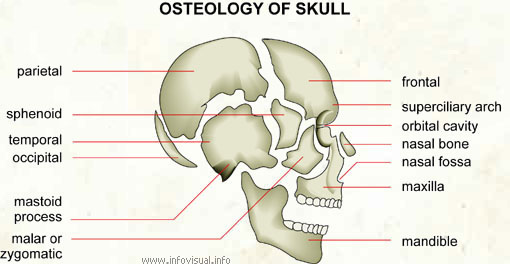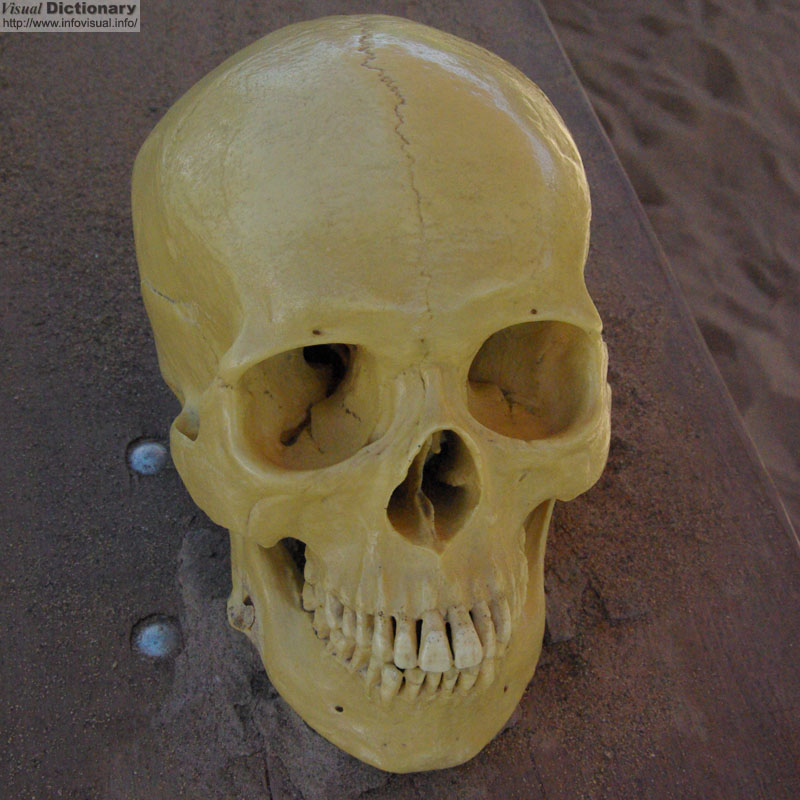Osteology of skull

Frontal: bone of the forehead.
Superciliary arch: arching bone of the eyebrows.
Orbital cavity: hollow part of the skull which contains the eye.
Nasal bone: bones of the nose.
Nasal fossa: bony cavity of the nose.
Maxilla: bony upper part of the jaw.
Mandible: bony lower part of the jaw.
Malar or zygomatic: cheek bone.
Mastoid process: bony outgrowth of the base of the skull.
Occipital: bone forming the lower back part of the skull.
Temporal: bone of the temple.
Sphenoid: bone at the base of the skull.
Parietal: bones forming the sides and tops of the skull.
Photo :
EN : Human
skull
FR : Crâne
humain
ES : Cráneo
humano

The humain skull is a bony structure found in many animals which serves as the general framework for the head. The skull supports the structures of the face and protects the head against injury. The skull is made up of two bones: the cranium and the mandible. A skull that is missing a mandible is only a cranium, this is the source of a very commonly made error in terminology. Protection of the brain is only one part of the function of a bony humain skull. For example, a fixed distance between the eyes is essential for stereoscopic vision, and a fixed position for the ears helps the brain to use auditory cues to judge direction and distance of sounds.
Animation : Human Skull
Thanks to YouTube for allowing us to watch this video.